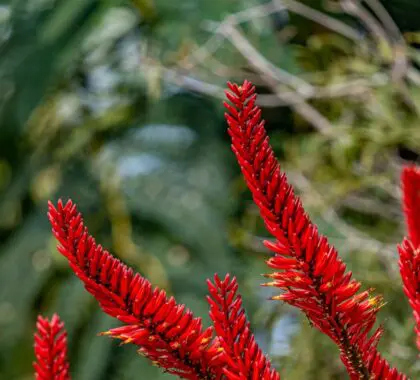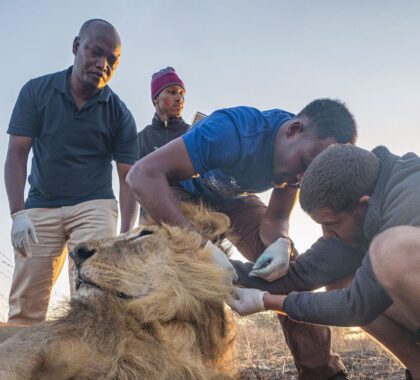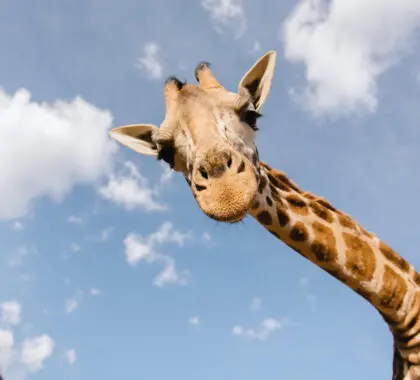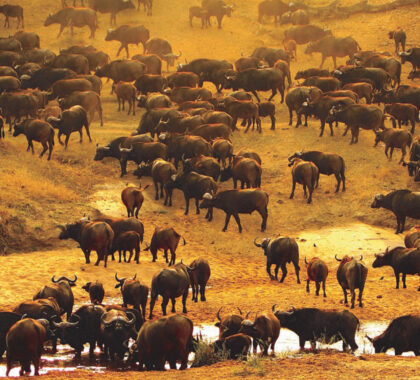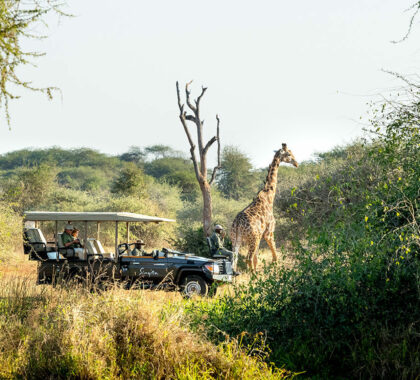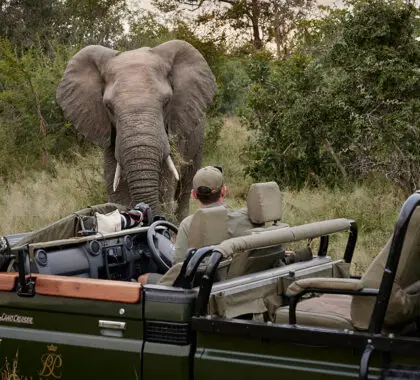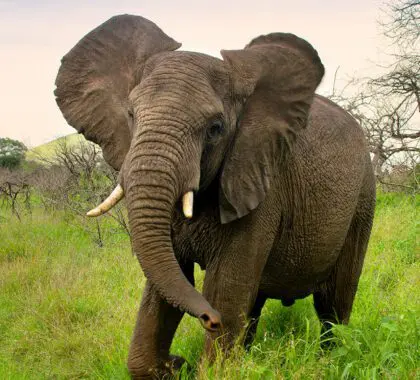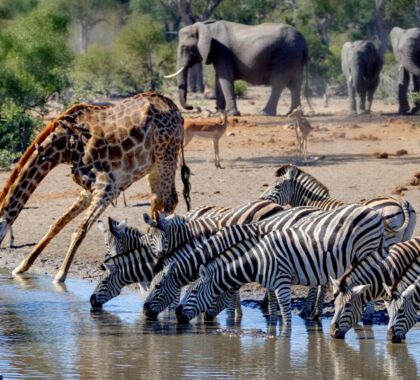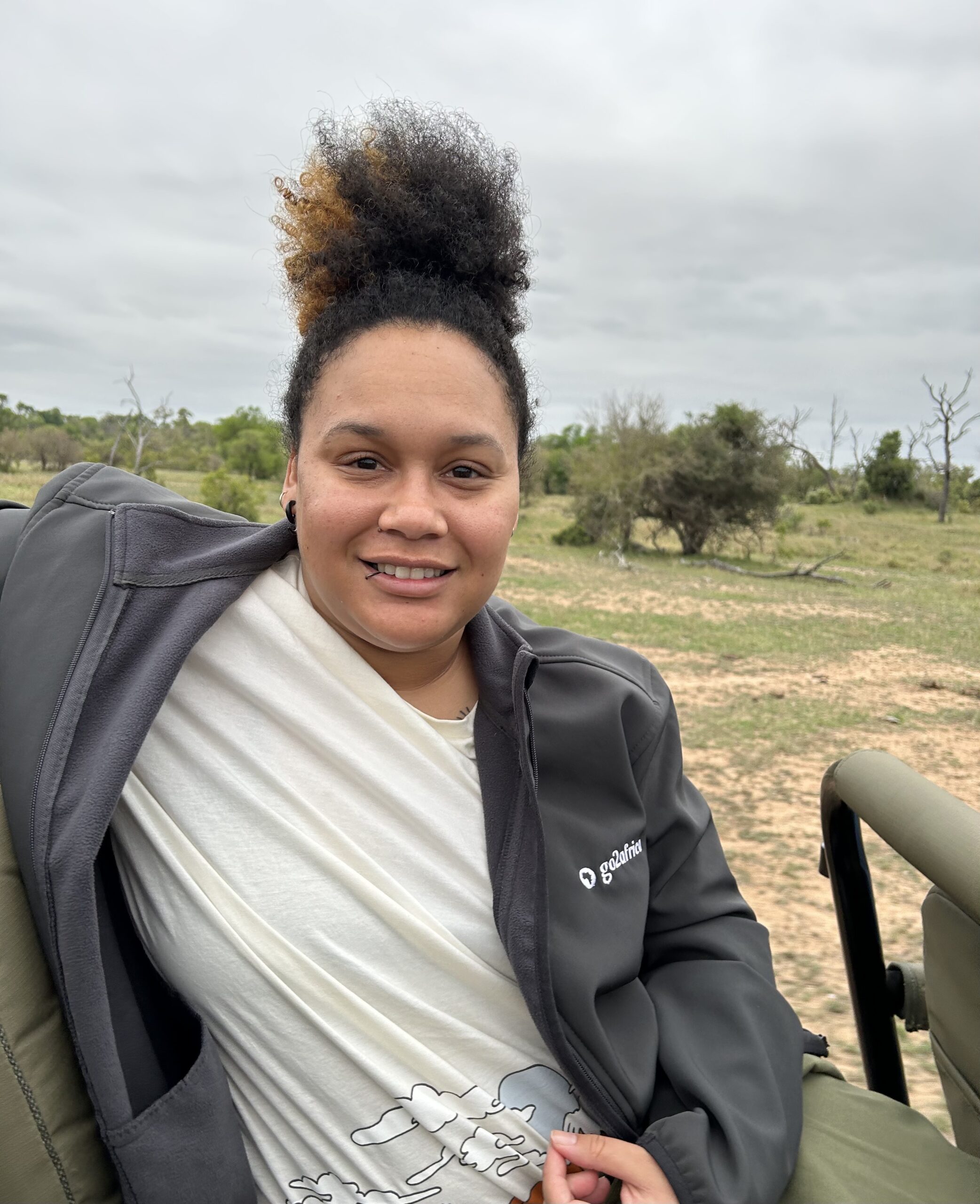Estimated reading time: 11 minutes
African wild dogs, also known as Africa’s ‘painted wolf’, are a fascinating species of carnivore and a rare safari sighting. They are the most successful hunters of any of the predatory mammals on the continent, boasting an almost 80% success rate. They’re also an incredibly social species, who are known to hunt in packs of 20 working together, help individuals in the pack who are weak or ill and have all members (male and female) take care of the pups.
But for all the hunting prowess, skill, and community that these creatures possess, African wild dogs are still one of the world’s most endangered mammals. Once a widespread species with a population of nearly 500,000, this number has dwindled down to less than 6,000 today. This is due to major threats to the survival of wild dog, which includes viral diseases, habitat loss and competition with larger predators. However, these issues pale in comparison to the biggest threat to wild dogs – the human-wildlife conflict.
Fortunately, there are organisations that are dedicated to ensuring that African wild dogs are conserved for generations to come. The Endangered Wildlife Trust (EWT) is one of these heroic operations that are making use of innovative conservation strategies to ensure the survival of this species. Recently, a few volunteers from the Go2Africa team had the privilege of joining EWT in the field and witnessing first-hand the incredible work the group is doing to safeguard African wild dogs.
https://vimeo.com/778032018
Who Is the Endangered Wildlife Trust (EWT)?
The Endangered Wildlife Trust was founded in 1973 and is one of South Africa’s most reputable conservation non-governmental organisations (NGOs). The not-for-profit conservation organisation has dedicated itself to conserving threatened species and ecosystems in Southern and East Africa for the benefit of all.
The EWT is able to save endangered species and conserve habitats by implementing target-driven research and conservation action programmes, as well as executing projects that specifically tackle the threats species face and supporting sustainable natural resource management. Being one of the country’s leading biodiversity conservation organisations, the EWT is well-versed in identifying key factors threatening biodiversity and developing innovative methods and best-practice guidelines to help reduce these threats to promote a more harmonious and sustainable co-existence for both people and wildlife.
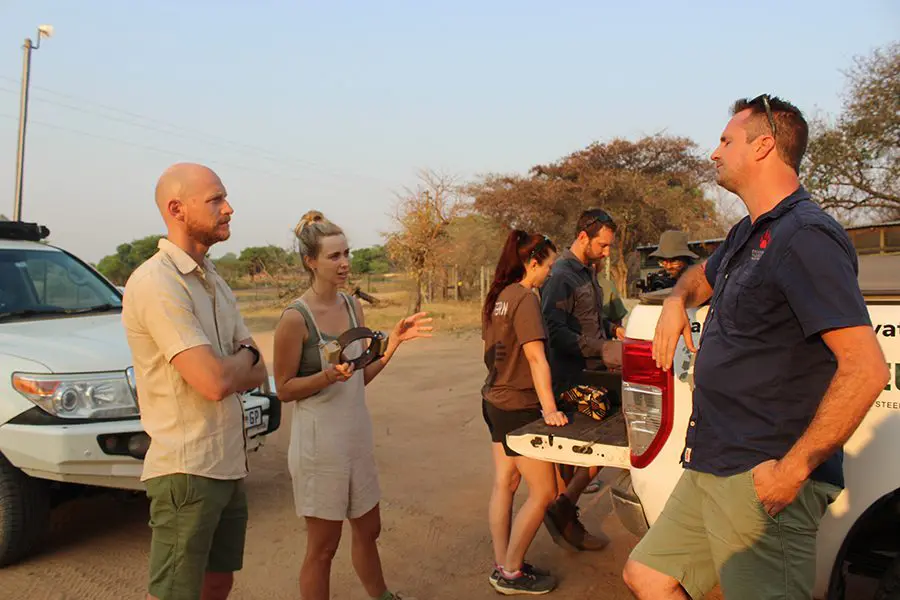
What is the Carnivore Conservation Programme (CCP)?
One of the EWT’s flagship programmes is the Carnivore Conservation Programme (CCP), an initiative that implements large-scale, collaborative, field-based projects to actively increase the range, numbers, and status of Africa’s threatened carnivores in the Anthropocene (the age of human beings). The EWT achieves their mission to boldly prevent the extinction of carnivores in Southern Africa through the re-establishment, maintenance, and expansion of safe spaces for carnivores. In doing this, they actively reduce threats to the survival of carnivores, ensure positive changes of human-based values toward them, and support legislation to protect these species.
The main goal of the EWT’s Carnivore Conservation Programme is to reverse the global trends of carnivore species decline through actively increasing carnivore populations in Southern Africa. In fact, their ethos is: ‘We should, we can, we do save carnivores.’
African wild dog is the flagship species of the CCP, due to the rapid decline of population numbers seen since the nineties. During this time, the Kruger National Park was considered the only safe space for wild dogs in South Africa, as most of the population outside this protected area has become locally extinct and declared one of the most endangered carnivores in the country.
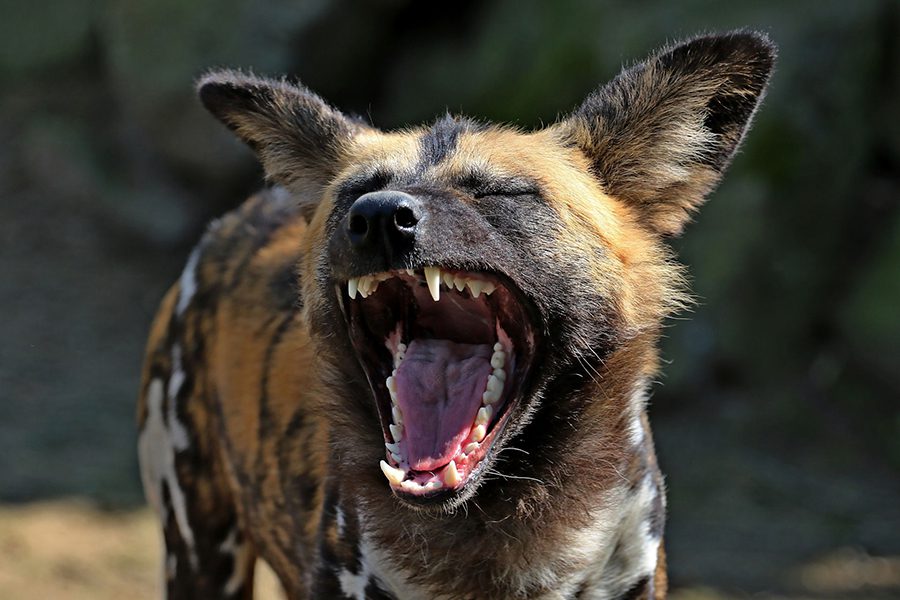
The Start of the Kruger Wild Dog Project
African wild dog plays an essential role in many ecosystems. This predator contributes to maintaining sustainable populations of prey animals. Furthermore, they help distribute nutrients throughout the ecosystem when scavenging on the kills of other predators. It is imperative that this fascinating species be protected and conserved.
Although the EWT has been studying and conserving African wild dogs since the early nineties, the alarming dip in wild dog numbers prompted a strategy meeting in 1997 to revive conservation of the species in South Africa. From here, wild dog territory was expanded from the Greater Kruger landscape to other protected areas in South Africa, such as KwaZulu-Natal.
This initiative was dubbed the Wild Dog Expansion Project and saw wild dog populations increase from 300 dogs confined to the Kruger National Park and Waterberg to approximately 550 roaming across South Africa. Since then, the project has grown from strength to strength, with the focus lying in the Kruger. This is due to the national park being home to the largest and most viable number of wild dogs in the whole of South Africa (approximately 250 to 300 individuals in 30 packs).
Why Are Wild Dog Endangered?
The main threats to the survival of African wild dogs are habitat fragmentation, disease, competition with larger predators and conflict with humans. These threats have resulted in a population decline of the mammal in over 90% since the early twentieth century. Human-wildlife conflict is by far the biggest contributing threat to the survival of wild dogs.
Wild dogs need large areas of uninterrupted space to not only survive but thrive. In the past, this was not a problem as wild dogs roamed freely. But as the expansion of human settlements, infrastructure and agricultural activities have increased more and more into wild dog territory, these fascinating predators find themselves confined to small pockets of suitable habitat throughout Africa.
In addition to habitat loss, the augmentation of human settlements into wild dog territory has also brought with it a host of other problems. One being the diseases spread from domestic dogs to the packs. Distemper and rabies spread like wildfire through a pack of wild dogs, quickly eradicating it before anything can be done to help. Another issue is the increase in road accidents that have occurred due to infrastructure running through wild dog territory.
Poaching is an ongoing threat to not only wild dogs but many other animals, such as elephants, pangolins and rhinos. Wild dogs are often poached for their fur and meat, which is used to make traditional clothing and bushmeat, respectively. And because wild dogs often frequent areas outside designated protected boundaries, they tend to get shot, poisoned, or snared on private property.
Although human-wildlife conflict is the predominant threat to wild dog survival, it’s not the only issue. Larger predators, like hyenas, leopards, and lions, play an essential role in regulating wild dog populations by either preying upon the smaller mammal or out-competing them for food. However, when there are too many predators, the wild dog population decreases faster than they can repopulate – which has contributed to the species becoming endangered.


How Does EWT Conserve Wild Dog?
The Wild Dog Expansion Project is just one aspect of the EWT’s ongoing efforts to conserve this endangered species. Once wild dogs leave the protected boundaries of the Kruger National Park and reserves, they become victim to the human-wildlife conflict. Thus, beyond expanding the habitats of wild dogs across Southern Africa, the EWT has taken a proactive approach to enable human-wild dog co-existence and reactive conflict mitigation to ensure the survival, reproduction, and success of Africa’s most threatened carnivore.
To effectively conserve wild dogs from the threats they face, the EWT needs to have a way to monitor the different packs and dispersals of members throughout the Greater Kruger landscape and Southern Africa. Extensive research, scrupulous science, collaborative field-based relationships, and an undying passion and love to protect this endangered species all led to the current long-term endeavour of the EWT’s Wild Dog Project.
In short, the Wild Dog Project monitors and conserves this highly endangered species through collaring and tracking packs, implementing vaccination programmes to protect them from diseases, securing and expanding their habitats, and ensuring they receive a rapid response when one or more members are injured.
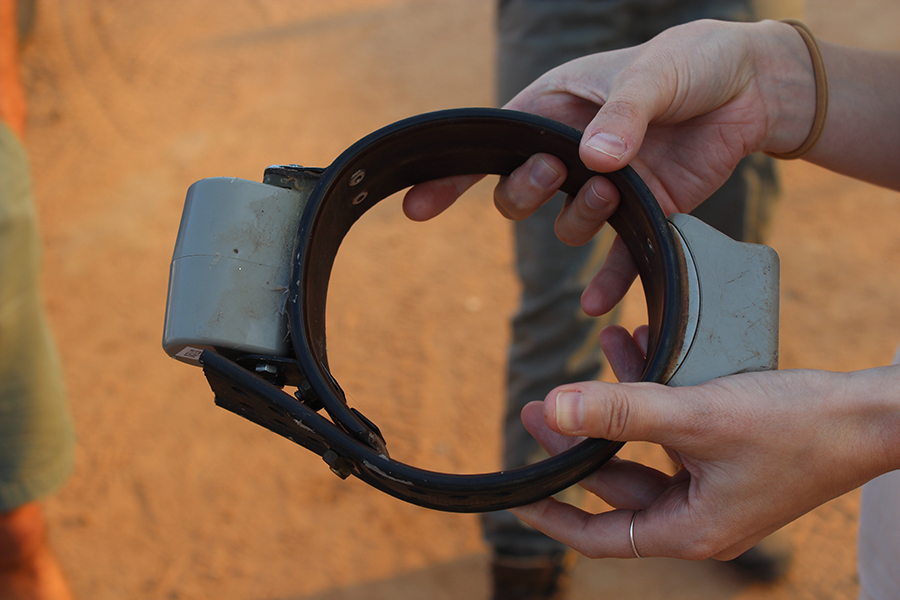

What is Collaring?
Collaring is a safe and nonintrusive method of conservation and an exciting ecological research technique. Each collar used in the Wild Dog Project is fitted with a GPS tracker, and through an automated system, allows the EWT to monitor where each pack is roaming in real-time.
By being able to keep track of the live location of wild dogs, the EWT can timeously identify when a pack might be heading into a dangerous or unsafe area and prevent or see to any injury or issues that may arise. For instance, snares are laid out by poachers to catch antelope in and around protected areas but often end up ensnaring wild dogs and other endangered species as collateral damage. Since the introduction of the collaring project, the EWT has removed approximately a hundred snares from wild dogs. This process also yields an excellent survival rate, as the EWT partners with experienced wild dog veterinarians to find snared dogs, remove the damaging and often lethal device, and treat the wounds.
In addition to aiding wild dogs when injured or in dangerous situations, the collars also allow the EWT team to keep track of pack composition and well-being. The collars allow for valuable data, information, and insights to be gathered on this endangered species. This data can then be used to study and expand our knowledge of the ecology of wild dogs, from their habitat use and movement patterns to their behaviour and prey selection. To top it all off, this data is then uploaded and stored on accessible databases, which other researchers and members of the wildlife conservation community can use to mitigate the need of collaring animals unnecessarily.
What Does a Typical Day Collaring Wild Dog Look Like?
In October 2022, four Go2Africa (G2A) team members had the phenomenal opportunity to fly out to the Kruger and get first-hand experience of the EWT’s field operations. We live our ethos, ‘We know because we go.’
The Endangered Wildlife Trust’s Lowveld Regional Carnivore Coordinator of the Carnivore Conservation Programme, Grant Beverley hosted the excursion, taking the team on a collaring expedition. From the very first moment you meet Grant, he’s eager to tell you anything and everything about the fantastic work that he and the rest of the EWT have been doing. With every question answered and each explanation given, you can feel the wild dog conservation expert’s deep passion and love for the species he strives to protect.
On Friday, 14 October 2022, the G2A team met up with Grant at 05:30 am at one of Kruger’s popular game reserves. As the first rays of light peaked on the horizon, the excitement was palpable. The aim of the day was simple – all that was needed was to change the battery of an already collared pack, who were located within the game reserve. As packs tend to be tightly knit, only one member of the group needs to be collared – this is usually the beta female. However, the batteries of the collar only have a lifespan of 12 to 18 months and need to be changed before it dies to ensure the pack’s location is not lost.
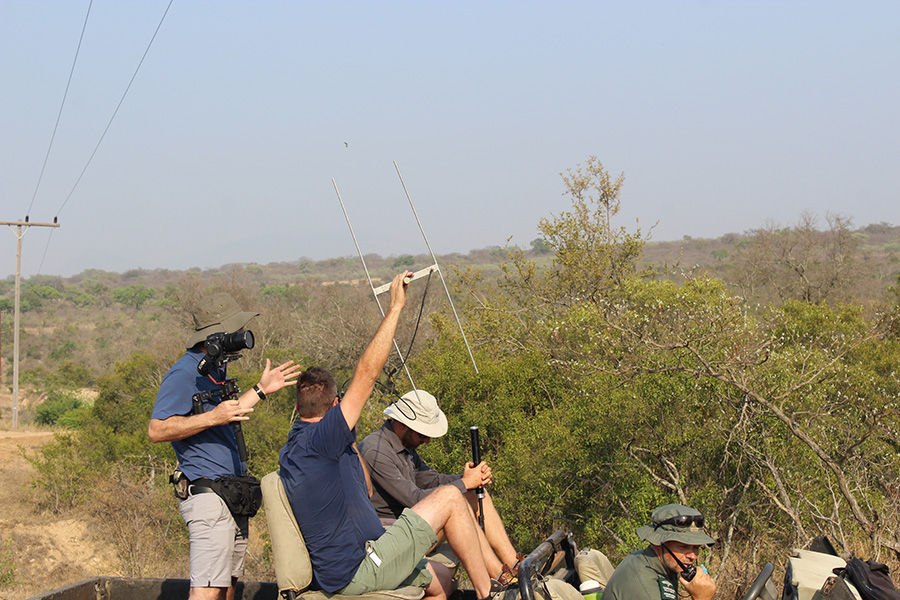

To be successful and effective, collaring requires several skilled professionals. Collaboration is a key factor in conservation, and it’s something that the EWT does well. Over the years, they have formed a number of beneficial relationships with expert wildlife veterinarians, conservation managers and skilled volunteers who ensure the collaring process runs smoothly and efficiently.
On arrival, Grant and the G2A team were met by those who would assist in the day’s collaring. They were greeted by the Conservation Manager of the game reserve who would be guiding them around the reserve in search of the dogs. Next, was the reputable Wildlife Vet and Veterinary Nurse, Anne, who would take charge of ensuring that the wild dog is tranquilised and awoken safely, as well as carry out the necessary medical checks to assess the health of the predator.
A few other expert volunteers also joined in on the expedition to lend a needed hand. Each person involved in the collaring exuded a deep love, passion and respect for the wildlife they’re entrusted to conserve. No amount of time, effort or discomfort is too much for them to endure to carry out their initiatives successfully.
After an unsuccessful morning of trying to lure the pack of wild dogs away from their den, the group decided to postpone the collaring to later in the day. The afternoon would be cooler, and the wild dog would be more likely to leave the comfort of their den. After a few hours, the group reconvened and tried again – this time, victorious!


The collaring process can typically be summed up as:
- The team searches for the exact location of the wild dog using radio telemetry (signals are sent by the collar to a receiver). When in the field, radio telemetry is used to track the specific location and movement of the collared wild dog. Using radio signals, radio telemetry locates animals and tracks their movement.
- Once located, a contact call (a specific sound wild dogs use to communicate with one another) is used to attract the pack to a safe area where the collaring can take place.
- After finding a clear shot, the vet then darts the collared wild dog with a tranquiliser made up of perfectly safe medication. A few minutes later, the collared wild dog will peacefully fall asleep.
- A sterile area is then set up where both the vet and veterinary nurse can perform a routine health check on the wild dog. Once satisfied that the wild dog is healthy, it is then time to change the collar.
- It’s a quick process to unscrew the low battery and replace it with a fresh pack. The collar is then checked and that it is transmitting the necessary GPS location.
- After the health check is complete and the collar battery is changed, it’s time to wake the wild dog. To do this, the wild dog is transferred a little way away from the vehicles and injected with medication that reverses the previous doses given.
The entire team then returns to their vehicles and waits until the wild dog wakes up. Not even five minutes later, the wild dog is back on its feet and heading out into the bush.
The entire collaring process takes no longer than 30 minutes to complete, depending on the time it takes to locate the wild dog and lure them into a safe area. And the best aspect of this method is that it is safe, nonintrusive, scientifically sound, and, above all else, respectful to the animal. Naturally, the latter is an important factor to an organisation whose sole goal is to conserve wildlife.
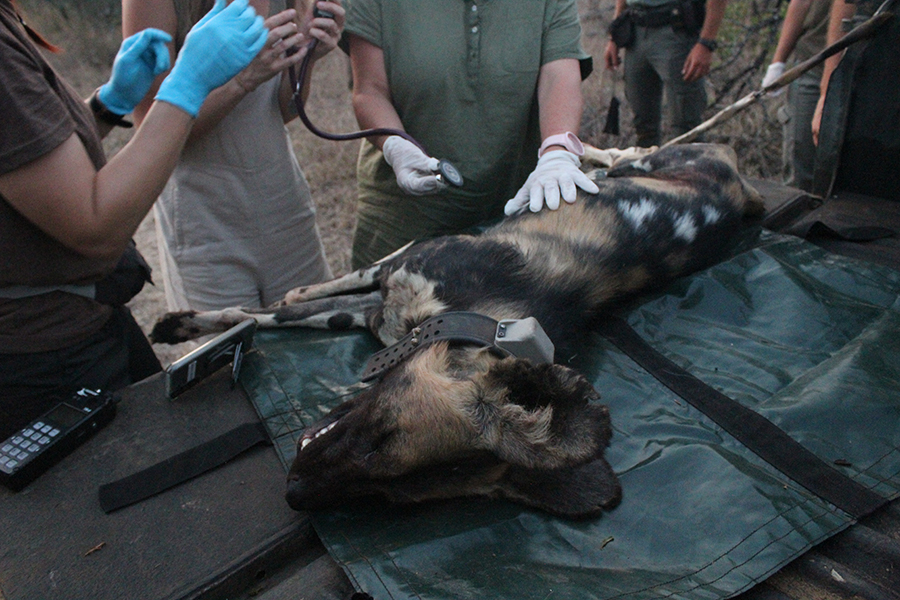

How Does Go2Africa Support the EWT?
As part of Go2Africa’s ongoing efforts to support reputable wildlife conservation initiatives throughout Africa, we have partnered with EWT, a pioneer on the front lines of protecting our wildlife. Go2Africa is committed to ensuring that the conservation organisation has our unwavering support while assisting the cause by educating travellers about on-the-ground initiatives taking place.
As a not-for-profit conservation organisation, the EWT is completely dependent on donors. Since August 2022, Go2Africa has pledged to provide donations to help provide funding for the equipment needed to successfully track and monitor vulnerable African wild dogs and provide protection to these populations in the Greater Kruger region. We are thrilled to support the EWT’s remarkable conservation efforts within one of Africa’s top Big 5 safari destinations.
The ultimate goal of Go2Africa’s partnership with the EWT is to create awareness around their important wildlife conservation work, as well as to develop a sustainable stream of income to help fund their efforts. We have pledged to donate USD 20 per Kruger booking for stays at a select few of our partner safari lodges. These are:
- Thornybush Game Lodge
- Saseka Tented Camp
- Simbambili Game Lodge
- Lion Sands Tinga Lodge
- Lion Sands Narina Lodge
- Lion Sands River Lodge
- Lion Sands Ivory Lodge
- Pafuri Luxury Tented Camp
By contributing a percentage of certain bookings made in the Kruger to the EWT, Go2Africa hopes to encourage our clients to not only visit this spectacular safari destination but to also help them understand that by doing so, they’ll have a hand in wildlife conservation and providing a positive impact. The cherry on top is that Go2Africa will be happy to arrange a visit with the EWT if you’d like to learn more and gain a first-hand understanding of their wild dog conservation work.
Ready to Help Save the African Wild Dog by Booking a Kruger Safari?
Chat with someone who’s been there. Get in touch with one of our Africa Safari Experts to help tailor-make your positive impact trip of a lifetime:

